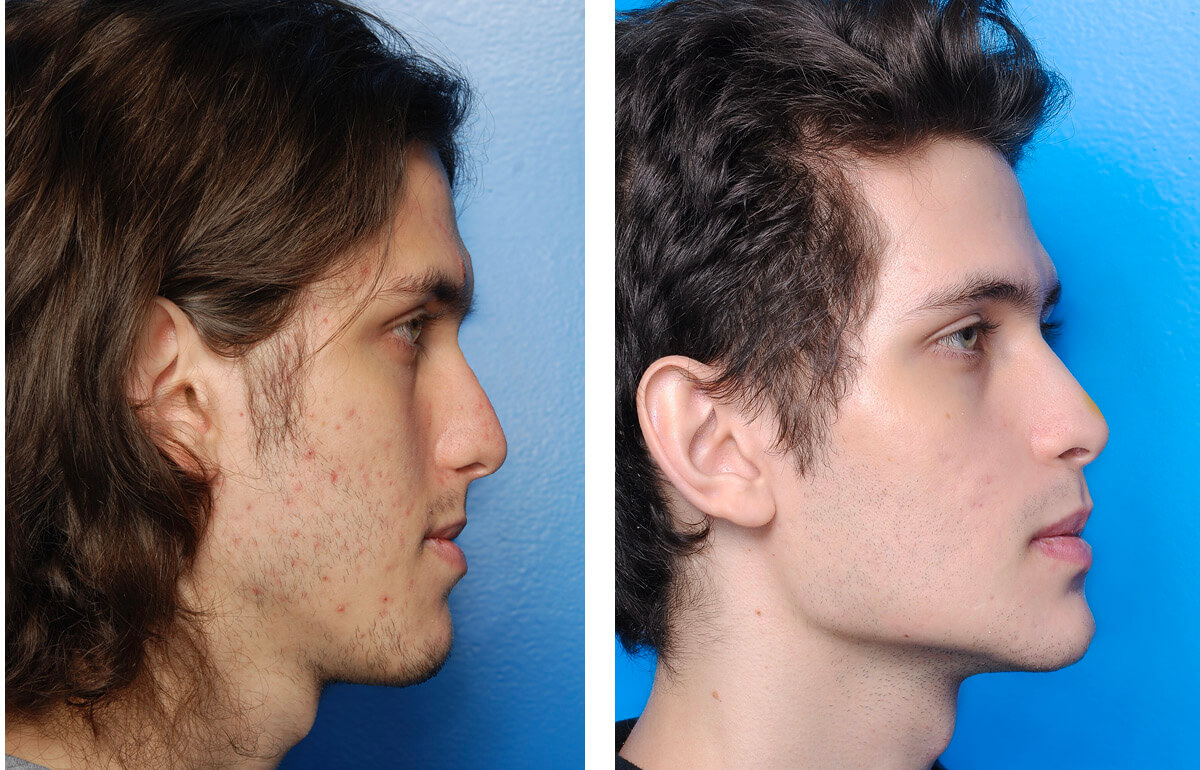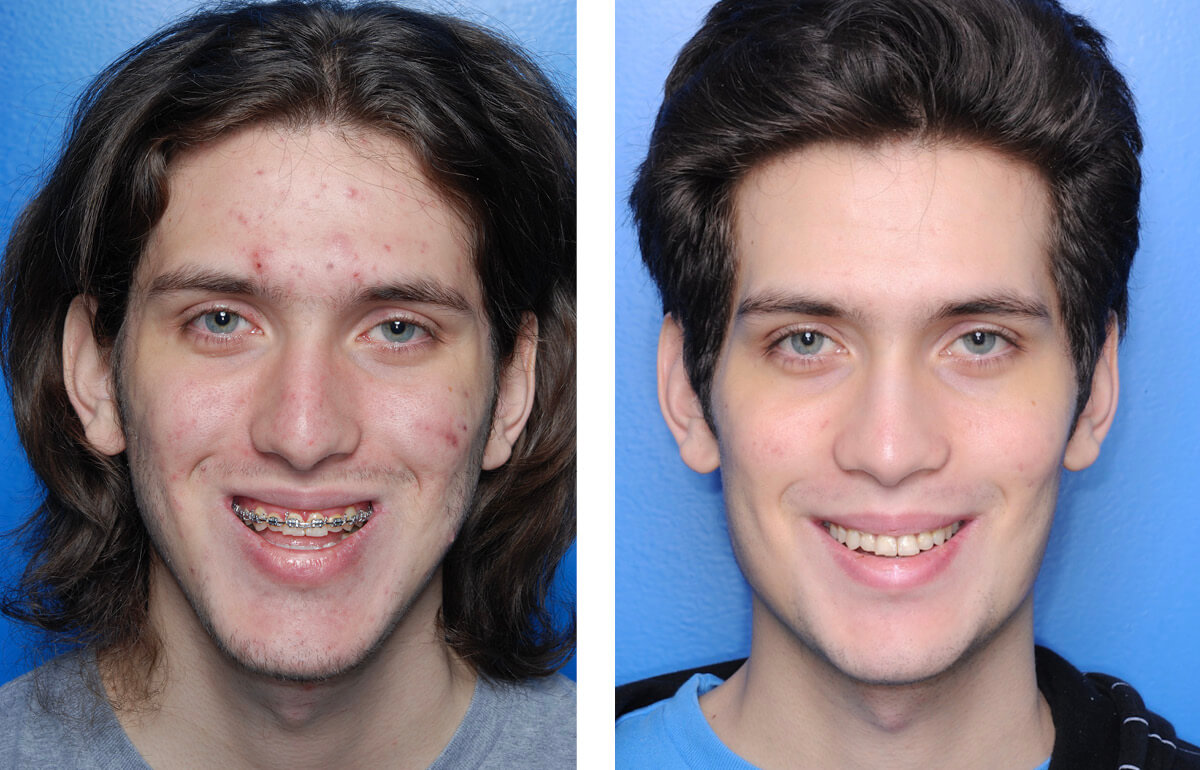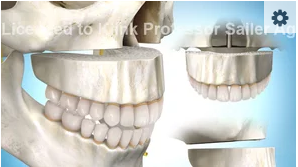Braces
Millions of children and teenagers wear braces so that they can end up with two perfect rows of teeth when they smile. Braces and headgear force slanting teeth into the desired position over the course of months and years. Sometimes teeth are even removed to give the remaining teeth enough room. However, a purely orthodontic treatment is often not sufficient on the one hand to achieve good tooth positioning without forced positioning of the jaw joint, or to achieve an attractive appearance on the other. In these cases the interdisciplinary treatment of the patient by an oral and maxillofacial surgeon, an orthodontist and their general practitioner should take place, in order to achieve an optimal result in all respects.
Surgical treatment
Treatments to the jaw and teeth change the aesthetics of the face and require complex physiognomic correlations to be taken into consideration. The correction of dysgnathia is one of the most frequent operations performed at the Klinik Professor Sailer. Usually, the upper and lower jaw must be repositioned together, and in general an orthodontic pre-treatment takes place before the operation. In rare cases, orthodontic treatment takes place after the operation. 20% of our operations are repeats, after a similar procedure has been carried out elsewhere. 20% of our operations take place on patients who were treated exclusively by an orthodontist and are not satisfied with the resulting facial aesthetics, although their tooth position is optimal. For this group of patients, we have developed special operation techniques which enable excellent aesthetic results without changing the tooth positioning.
Correction of mandibular protrusion and distal occlusion
For the experienced surgeon it is unimportant whether the patient presents with a distal occlusion (recession of the lower jaw) or a mandibular protrusion (overbite of the lower jaw), the decisive factor is the planning concept for the treatment and the aim of achieving an attractive face and a normal and/or functional tooth position.
Correction of asymmetries of the jaw
The correction of asymmetries of the jaw is significantly more difficult and represents a great challenge, even for an experienced surgeon. The most frequent subsequent corrections or supplementary operations occur in cases of these facial asymmetries. The difficulty lies, on the one hand, in the deformation of the lower jaw with frequently extremely narrow ascending rami of the mandible, which can only be divided with great surgical experience; on the other hand, in the position of the upper jaw and/or lower jaw complex, which often has to be performed freehand without position splints. To divide the ascending branches of the mandible we use the piezo device which uses ultrasound to separate the bone but does not damage the nerve running within the bone.
Perfect planning for perfect results
Decisive for the results are intensive, often numerous planning meetings with the patient in order to develop a joint aesthetic goal. Usually the patient desires an anteface (as described by Professor Sailer) which corresponds to today’s ideal of beauty (similar to the ancient Egyptian Queen Nefertiti). Professor Sailer has developed techniques to make a highly attractive anteface, even from an average or receding face. Many famous actors and actresses, top models and beauty queens have a forward position face: the anteface (according to Professor Sailer).
Gummy Smile


Illustrations of the operation techniques in the case of an upper jaw displacement to correct a so-called “gummy smile”.
*The movement of the jaw is adjusted to the individual requirements of the patient. The demonstration video is only for illustrative purposes. The operation results differ according to the individual facial form of the patient.
Gummy Smile Operation
Pia K. Germany
I had my operation with Professor Sailer in October 2017. I learnt about the clinic several years ago. However, the procedure was not yet possible for me at that time.
After having an operation carried out on my lower jaw in Germany, which did not solve my actual problem, I decided that I would only have a second procedure carried out by a specialist. After a change of job, my dream once again seemed to be within reach and I arranged a consulting appointment. At the appointment I met Dr. Sailer and Professor Sailer and already on the flight back home I was sure that I would have the procedure carried out there. Following a second appointment, at which everything was precisely discussed and planned, I was lucky enough to be assigned an operation date a few weeks later.
It was a major procedure, but believe it or not, I was never in pain for a single moment. Three months have gone by now and everything has healed well and the swelling has subsided. After years of being dissatisfied, my new appearance is a source of delight every day. Having the procedure carried out was one of the best decisions of my life and I can wholeheartedly recommend the professor, his clinic and the whole team. Rest assured you are in good hands there, both in terms of care and technical competence.


